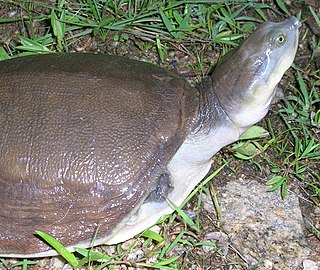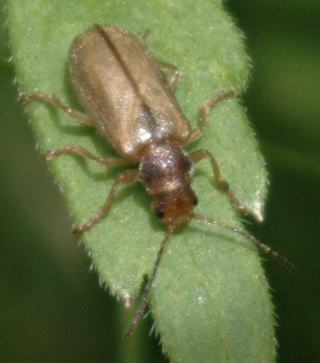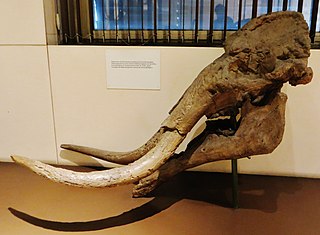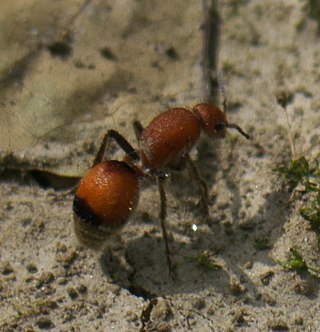
The Anserinae are a subfamily in the waterfowl family Anatidae. It includes the swans and the true geese. Under alternative systematical concepts, it is split into two subfamilies, the Anserinae contain the geese and the ducks, while the Cygninae contain the swans.

Colubridae is a family of snakes. With 249 genera, it is the largest snake family. The earliest species of the family date back to the Oligocene epoch. Colubrid snakes are found on every continent except Antarctica.

The Phrynosomatidae are a diverse family of lizards, sometimes classified as a subfamily (Phrynosomatinae), found from Panama to the extreme south of Canada. Many members of the group are adapted to life in hot, sandy deserts, although the spiny lizards prefer rocky deserts or even relatively moist forest edges, and the short-horned lizard lives in prairie or sagebrush environments. The group includes both egg-laying and viviparous species, with the latter being more common in species living at high elevations.

The insects of the beetle family Chrysomelidae are commonly known as leaf beetles, and include over 37,000 species in more than 2,500 genera, making up one of the largest and most commonly encountered of all beetle families. Numerous subfamilies are recognized, but the precise taxonomy and systematics are likely to change with ongoing research.

Lagenorhynchus is a genus of oceanic dolphins in the infraorder Cetacea, presently containing six extant species. However, there is consistent molecular evidence that the genus is polyphyletic and several of the species are likely to be moved to other genera. In addition, the extinct species Lagenorhynchus harmatuki is also classified in this genus.

Caracaras are birds of prey in the family Falconidae. They are traditionally placed in subfamily Polyborinae with the forest falcons, but are sometimes considered to constitute their own subfamily, Caracarinae, or classified as members of the true falcon subfamily, Falconinae. Caracaras are principally birds of South and Central America, just reaching the southern United States.

Hylidae is a wide-ranging family of frogs commonly referred to as "tree frogs and their allies". However, the hylids include a diversity of frog species, many of which do not live in trees, but are terrestrial or semiaquatic.

Scorpaenoidei is a suborder of ray-finned fishes, part of the order Scorpaeniformes, that includes the scorpionfishes, lionfishes and velvetfishes. This suborder is at its most diverse in the Pacific and Indian Oceans but is also found in the Atlantic Ocean.

Lissemys is a genus of softshell turtles in the subfamily Cyclanorbinae of the family Trionychidae. The genus is indigenous to southern Asia.

Ailuravus is a genus of prehistoric rodents in the family Ischyromyidae.

The Orsodacnidae are a small family of leaf beetles, previously included as a subfamily within the Chrysomelidae. It is the smallest of the Chrysomeloid families in North America; Oxypeltidae is smaller, with only three species in South America. A fossil species of Aulacoscelis is known from the Early Cretaceous (Aptian-Albian) Santana Group of Brazil.

The Synetinae are a small subfamily within the leaf beetle family (Chrysomelidae). They are found entirely within the Holarctic, mainly in North America but also appearing in parts of Europe and Asia. The subfamily contains only two genera, Syneta and Thricolema, with a total of 12 described species. The group is sometimes treated as a tribe of Eumolpinae, where they are known as Synetini.

Cycloderma is a genus of softshell turtles in the subfamily Cyclanorbinae of the family Trionychidae. The genus is endemic to Africa.

Carditidae is a family of marine bivalve clams of the order Carditida, which was long included in the Venerida. They are the type taxon of the superfamily Carditoidea.
Gonioglyptus is an extinct genus of trematosaurian temnospondyl within the family Trematosauridae. It is known from the Early Triassic Panchet Formation of India. It contains two species: G. longirostris and G. fragilis. The species G. kokeni from Pakistan has since been reclassified into Aphaneramma.

The Scalopinae, or New World moles, are one of three subfamilies of the family Talpidae, which consists of moles and mole-like animals; the other two subfamilies being the Old World talpids and the Chinese shrew-like moles (Uropsilinae). The Scalopinae are the only Talpidae subfamily to consist entirely of undisputed moles and no mole-like close relatives such as shrew-moles or desmans.

Colubroidea is a superfamily of snakes in the clade Colubroides that includes Colubridae, with some studies splitting Colubridae into multiple families that make up Colubroidea. Historically, Colubroidea also included other caenophidian snakes such as cobras and vipers, as these snakes form a clade. However these groups are now divided into several distinct, but related, families. Zaher et al. (2009) proposed to redefine Colubroidea for colubrids and related families, while designating Colubroides as the group containing vipers and cobras as well as colubroids. The ReptileDatabase considers Colubroidea to be composed of Colubridae and the members of its sister group, Elapoidea, and does not recognize the division of Colubridae into multiple families.

Choerolophodontidae is an extinct family of large herbivorous mammals that were closely related to elephants. Two genera are known, Afrochoerodon and Choerolophodon.

Pompiloidea is a superfamily that includes spider wasps and velvet ants, among others, in the order Hymenoptera. There are 4 families in Pompiloidea.
Janbechynea is a genus of leaf beetles in the family Orsodacnidae. There are at least 12 described species in Janbechynea, found in North America. The genus is named after the Czech entomologist Jan Bechyně.

















